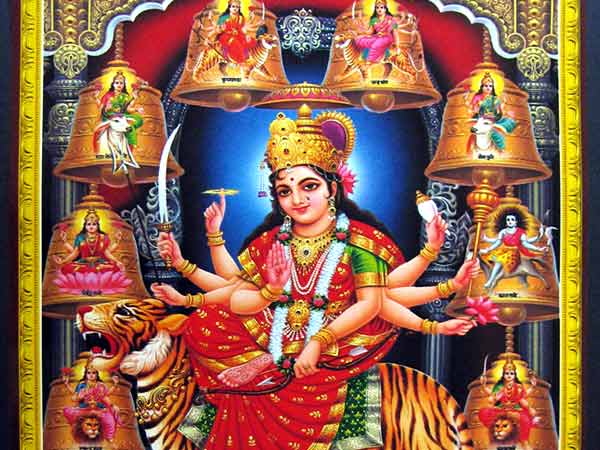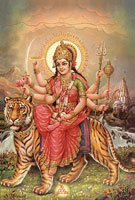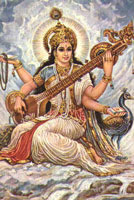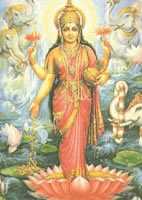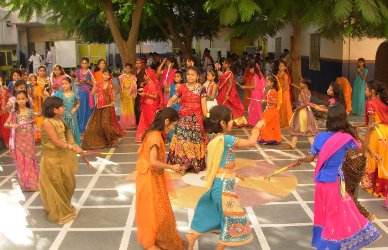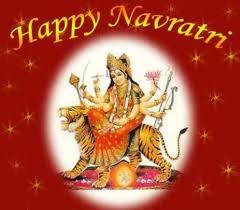India is a colorful land where festivals and celebrations are an integral part of everyday life. India has a very rich historical and cultural background. India is a country where the number of individual languages listed is 452, out of which 438 are living languages and 14 have no known speakers.
Each of the myriad festivals in India has a significance, charm and magic of their own. Fun and enjoyment are the outcomes of each of these festivals, so popular for setting the festive mood. Navaratri is one of the prominent Indian festivals which is celebrated for nine days. It is dedicated to the worship of Goddess Durga, the deity of Power.
Like the other festivals of India, Navaratri also has a significance and meaning attached to it. Each day of the nine-day festival is dedicated to the worship of different forms of Goddess Durga, which unfolds the religious importance of the occasion. According to Hindu Puranas, Navaratri is celebrated twice a year- in Chaitra and again in Ashwina.
The worship in autumn is termed as ‘Akaal Puja’ because it involves the invocation of multiple forms of the Goddess during the nights, such as Kaalratri, Shivaratri, Moharatri, Veeraratri, Divyaratri, Devaratri, etc. During the first three days of Navaratri, the worship of Mahakali is performed, who controls the spiritually impure tama component. This reduces the tama component in oneself. During the next three days, the worship of Mahalakshmi is performed which controls the spiritually pure sattva component. This enhances the sattva component in oneself. During the last three days, the worship of Mahasaraswati controller of the rajas component is performed. This intensifies one’s spiritual practice.
Rotation is the inherent nature of the earth. Our earth rotates on a certain pace and thus the change of day and night occurs. In Navaratri, the term ‘ratri’ denotes the change of nights in the festival. One of the names of the deity Durga is ‘Kaalratri’. Kaalaratri is the one who brings about a change in the Absolute Being of time. To be able to withstand such changes effectively, religious observances like Navaratri are undertaken.
In Hindu mythology, there is a particular story related to the Navaratri celebration. This religious observance was advocated by Sage Narad to Lord Rama, so that Lord Rama could slay the evil Ravana. After the completion of this observance, Rama attacked Ravana’s kingdom, Lanka, and slayed Ravana. According to another mythological story, the female deity Durga combated the demon Mahishasur for nine days from the first day to the ninth day and finally slayed him on the ninth night. Since then she has come to be known as ‘Mahishasur-mardini’, the slayer of Mahishasur.
Navaratri is celebrated in different ways in different parts of India. It is a festival of worship, dance and music. North Indians celebrate the 9 days of Navratri watching the annual Ramlila pagents under the post-monsoon skies full of twinkling stars. Coconut laddoos, payash, bundi sweets are typical Navratra food preparations.
The most characteristic dances of Gujarat during Navratri are the Rasa and Garba dances which are performed by men and women of all levels of society. It is a festival of joy that depicts the victory of goodness over evil forces. We also hope that in this glorious festival, Maa Durga may bless us all so that we can defeat the evil of ignorance and can enter into a bright new world of knowledge.
Significance of Navaratri for Householders
However, Navaratri is not only significant for spiritual aspirants; it has a message for those who lead a worldly life as well. They should invoke Durga’s help to surmount obstacles, pray to Lakshmi to bestow peace and prosperity, and contemplate upon Saraswati in order to gain knowledge. These three ingredients are just as necessary for a full and complete worldly life. In reality, when we pray like this, we are but invoking the Shakti that is within ourselves.
Durga, Lakshmi and Saraswati are not different entities, but different facets of the singular Divinity.
Some of the spiritual practices associated with Navaratri include fruit and milk fasts, japa (mantra chanting), chanting of hymns dedicated to Devi in Her different forms, prayer, meditation and recitation of sacred texts including the Devi Mahatmya, Sri Lalita Sahasranama and the Durga Saptashati.
Ayudha Puja
The ninth day is also the day of the Ayudha Puja. The Ayudha Puja is a worship of whatever implements one may use in one’s livelihood. On the preceding evening, it is traditional to place these implements on an altar to the Divine. If one can make a conscious effort to see the divine in the tools and objects one uses each day, it will help one to see one’s work as an offering to God. It will also help one to maintain constant remembrance of the divine. (In India it is customary for one to prostrate before the tools one will use before starting one’s work each day; this is an expression of gratitude to God for helping one to fulfill one’s duties.)
Children traditionally place their study books and writing implements on the altar. On this day, no work or study is done, that one might spend the day in contemplation of the Divine.
Saraswati Puja and Vidyarambham
The tenth day is called Vijaya Dashami. Devotees perform a Saraswati Puja (ceremonial worship) to invoke the blessings of Saraswati. Some devotees also perform pujas dedicated to Durga to mark Her victory over the demon, Mahishasura.

